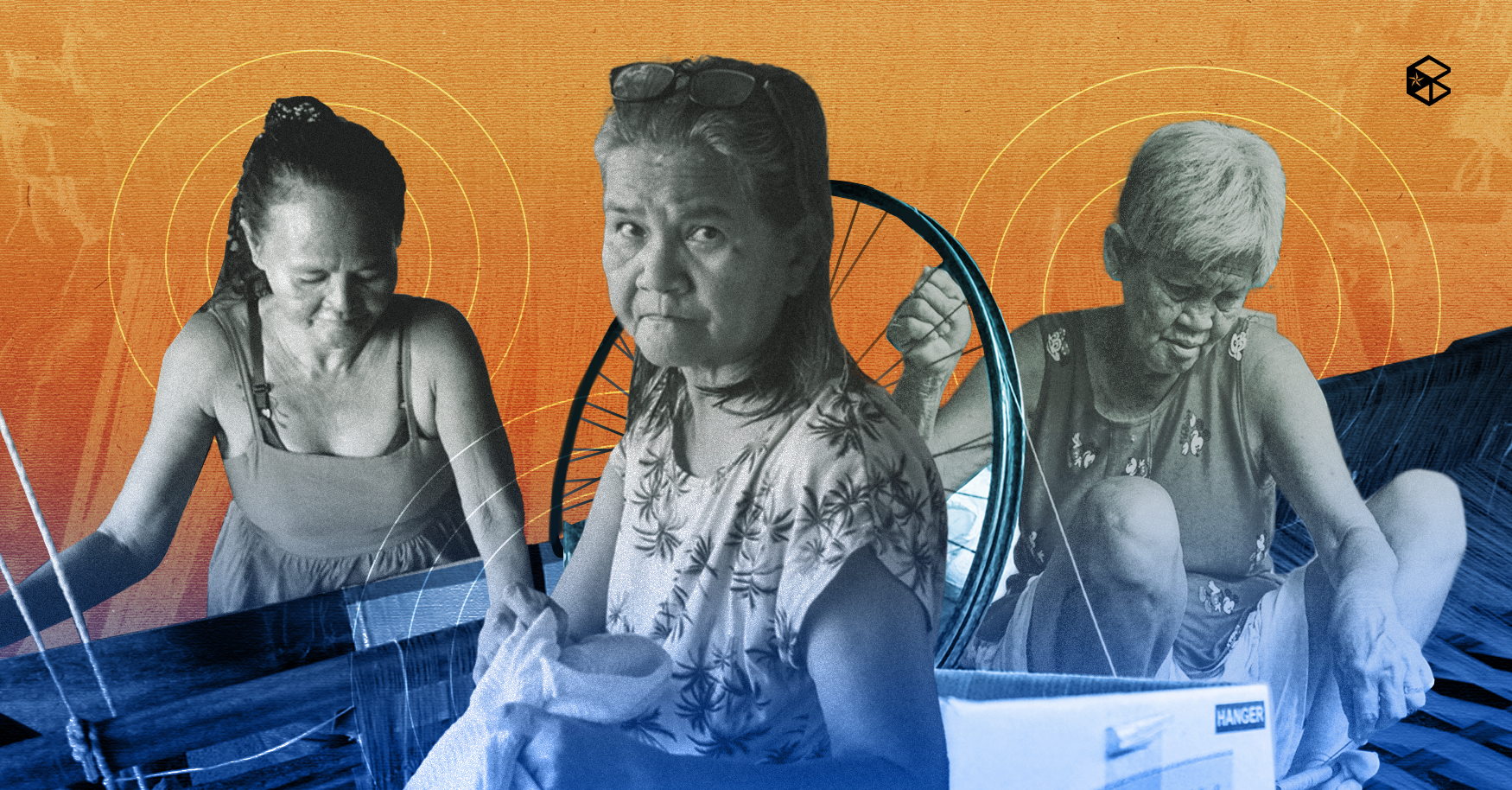Mainly known mostly for its serene beaches, La Union offers attractions beyond grape picking and surfing. Away from the coast, it is also home to several loom weaving businesses. The craft of loom weaving has existed in the towns of La Union for several decades, with some locals adopting it as their primary livelihood, turning it into a tourist attraction.
The town of Bangar, La Union, is particularly known for its many loom weaving businesses. The artisans, primarily women, pass down the tradition through generations of families, either out of necessity or due to cultural practice. Regardless, the town has gained recognition for the uniqueness of its product—from hand towels to blankets—keeping the timeless craft alive amidst changes in the industry, separating itself from mass-produced textile goods.
Merdy, 60
In an interview with The Benildean, Merdy, a worker from De Castro’s Loom Weaving, shared that she has spent most of her life in the craft of loom weaving. With 45 years of experience in the industry, having started at 14 years old, she narrated her beginnings as a weaver, being taught by her mother, “Noon akong nagsimula, ganyan na kalaki ‘yung pinaghahabihan ko kasi ‘yung nanay ko, siya ‘yung nagtuturo sa amin.”
When asked if she had any plans on teaching her kids, she added that she didn’t need to. “Kahit hindi mo turuan mga anak ko marunong sila, basta tinitignan lang nila ‘yung ginagawa mo, marunong sila.”
However, Merdy thinks that, unlike her, her children show no interest in pursuing the art of loom weaving as a career. She added, “Hindi na ata eh kasi may trabaho na ‘yung anak kong binata. Nagtuturo sa Balawa kasi nakapasok na teacher.” However, she still belongs to a family of weavers since aside from her children, her siblings and niece practice the craft. “Lahat kami maghahabi ng mga kapatid ko tsaka pamangkin ko.”
Some loom weavers in the industry share the same sentiment as Merdy and her children. When Merdy was searching for jobs and a career to pursue, she couldn’t find one that suited her. “Wala namang papasukan dito na trabaho na pwede kami,” she voiced out.
Merdy earns ₱250 per day and each day she makes an average of eight towels, mostly pre-ordered. She stated that it was her entire family’s livelihood, “Ganito kami nabubuhay eh. Kahit konti-konti lang ang sinasahod namin linggo-linggo, may pambili pa rin kami ng pagkain ‘tsaka mga kailangan sa bahay.”
Lisa
Unlike some of her fellow artisans at De Castro’s Loom Weaving, Lisa has only been weaving professionally for a year, during the time of The Benildean’s interview with her. She shared that she first discovered the craft when she was just nine years old—which was when she started practicing. Lisa specializes in a weave finish known as “Wasig”—a plain pattern that is reversible on most of the products it is used on.
“Ganito kasi ‘yung nagsimulang trabaho nung 9 years old pa lang ako, nag-practice na akong mag-ganito hanggang ngayon kasi gusto ko namang makakita ng pera kaya ayun, sinubukan ko gumawa nang gumawa,” she recalled.
Lisa shared that loom weaving is a physically demanding endeavor. Most of her fellow workers come in irregularly—some get sick, while others continue their education at nearby schools. The craft also requires consistent labor as the work is directly proportional to the pay. She added, “Kung ganitong maliliit ‘yung ginagawa ko [referring to table napkins], mga mahigit 20 ‘yung magawa ko kung hindi ako tayo nang tayo. Pero kung tayo ako nang tayo tapos hindi maganda ‘yung pagka-padyak padyak tapos maiistorbo, konti na lang ‘yung magagawa.”
Jennifer, 34
Like most of the artisans working in De Castro’s Loom Weaving, Jennifer started loom weaving because, during her time in the town of Bangar, becoming an artisan was the profession she envisioned for herself. She started loom weaving in the sixth grade, learning from her mother, Lory, who is also a weaver.
Currently, Jennifer’s work is one of the primary means of supporting her family, including her four children, all of whom are in their primary and secondary years of education. Although she taught them how to weave, she prefers that they focus on their studies rather than taking up weaving professionally. Instead, it has become a hobby for her children.
Jennifer shared that one of the major struggles in her career was during the pandemic, when she had no access to the looms in De Castro’s. As a workaround, she used a loom that she had at home which was owned by De Castro’s to create hand towels as a means to continue her work amidst the lockdown in place.
Establishments like De Castro’s Loom Weaving distinguish themselves from mass-produced counterparts. The novelty of their work as loom weavers relies not only on the uniqueness of each product, but also on the attraction it offers to tourists who wish to take a peek at the process behind seemingly ordinary products.
With that in mind, the preservation of local techniques for weaving remains very much alive in the town of Bangar. The practice endures through generations of women across the community—whether as a source of income or simply to pass the time—the craft of loom weaving continues to provide livelihood for this small town.


